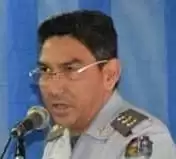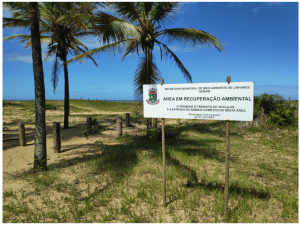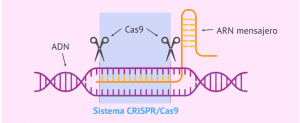ORIGINAL ARTICLE
MENDONÇA, Luiz Tobias Rodrigues [1]
MENDONÇA, Luiz Tobias Rodrigues. The deficits of Criminal Policies: Crime mitigation in the state of Amapá. Revista Científica Multidisciplinar Núcleo do Conhecimento. Year 05, Ed. 10, Vol. 03, pp. 29-46. October 2020. ISSN: 2448-0959, Access link: https://www.nucleodoconhecimento.com.br/law/criminal-policies
SUMMARY
The various functions of the State, including the creation of criminal policies, therefore, the research aims to present some factors that promote crime in the State of Amapá. The quali-quant methodology, with data collection of a clipping of the years between 2014 and 2018 of the Integrated Center for Social Defense Operations (CIODES), Police Investigation of Infractional Acts (DEIAI), Court of Justice of the State of Amapá (TJAP), Secretary of Planning (SEPLAN), information from the Military Police of Amapá. The results were that unemployment rates in Amapá are high with 66,000 unemployed with income inequality, high crime rates among young men these numbers triple the homicide rate, the absence of quality education in the civic-military model still insufficient, only three public schools, precarious housing, people living in subnormal clusters in areas of hangover , due to its income, the insufficient public budget for the resocitive actions passed on to the responsible body, in relation to the military police of Amapá the reduced staff for ostentatious policing. Due to these factors, he presented a proposal based on the strategic situational planning of Carlos Matus, following the principles of public administration planning involving all levels of prevention for young people in conflict with the law to mitigate criminal rates in the State of Amapá.
Keywords: Public policies, crime, factors, prevention.
INTRODUCTION
The role of the State is to propose tools to enable access to the rights of its citizens among them to public security that acts almost as Gause’s[2] niche in society, that is, they act in different situations and sufficiently in the same social environment that bothers many, because they interfere in antisocial conduct, criminal organizations and government failures[3]. Due to these situations, the levels of crime prevention do not present positive results in meeting the demands of the population, because public policies present antagonism, through romantic arguments of the government media.
Thus, through the Policiology[4] that the research will develop, Pereira states that the subject (police) who lives within society, through his empirical knowledge of his activities, are known as propaedeutics of police sciences, as self-knowledge of the police institution and organization (PEREIRA, 2015).
For this, the levels of prevention and their failures, which contribute to the emergence of crime, are erroneous “to blame the police for the expansion of crime, when it must be attacked always and especially in its origins, this is the role of the State in correcting or not in the formulation and implementation of public policies” (LAZZARINI, 1991, p.30).
On the other hand, there are several factors that promote crime is not simply the presence of the Administrative Police on the streets, because when the breakdown in harmony within the community or “any change in the structure of the family can change these costs and potentiate crime” children revolt against their parents for some reason, go to the streets, meet people who take them to drugs , prostitution, theft and theft. So the State acts, through legal mechanisms, regardless of social class, but with a greater incidence in the less economically favored classes with family deterioration, it is a fundamental factor that could avoid so many criminal events (OLIVEIRA, 2005).
Therefore, there are factors that interfere with crime, such as the structural of employment and income, social conditions and the influences of social organization in the constitution of the subject, family and school factors, in addition to aspects such as self-esteem and influence of groups, in this case may be of greater or lesser control of institutions at last, the individual level, which includes biological and psychological aspects and personality characteristics that can predispose the individual to crime , according to Shoemaker (1996 apud ZEPPA; DIAS, 2010).
The important thing is to understand the various factors related to crime, and because only police institutions are required by society, for this it is indispensable to clarify this criminal dynamic in the academic environment, because according to Jorge-Birol (2007) presents several levels of prevention: Primary, which involves education, this should occur full-time or military civics such as the State School prof. Antônio Messias Gonçalves in the neighborhood of Zerão , south zone of the city, State School prof. Afonso Arinos de Melo Franco in the municipality of Santana and Risalva Freitas do Amaral State School in the north of Macapá.
Primary prevention also involves housing despite the expansion of the real estate market in the State of Amapá, the housing favored by the federal government, still many people live in stilt area, due to hangovers, “currently there are a total of 84 neighborhoods, including in this quantitative subnormal clusters, of which only 28 were created officially” (CHAGAS et al, 2018, p.210)
Another factor inherent to primary prevention is jobs, data from IBGE, presented by G1 the unemployment rate in Amapá are 66,000[5]. In this case, public policies are important in the various sectors with the highest investment in the State for education, job creation and income, in order to mitigate the increase in crime.
In relation to secondary prevention, that the Military Police act in the care of occurrences, which goes from domestic violence, to thefts, robberies, homicides and drug trafficking, when the crimes have already occurred; it is the police officers who respond to society, always in a repressive way. To this end, military police are needed on the streets, with adequate physical facilities in the most numerous neighborhoods with the use of rapprochement or community policing.
According to General Bulletin No. 234, the military police personnel had a total of 3,175 (three thousand one hundred and seventy-five) military police, with a forecast in the Staff Distribution Board (QDE) of 7,932 (seven thousand, nine hundred and thirty-two) provided for in Complementary Law No. 105, published in the Official Gazette of the State No. 6532 , of 22 September 2017. As a means, a deficit of 4,757 (four thousand seven hundred and fifty-seven) police officers, a factor that must be resolved with government decisions.
In this case, the Public Security Policies need to be paid to fill the vacancies in clear, due to the notorious estimated population increase of 845,731 (eight hundred and forty-five thousand, seven hundred and thirty-one)[6] and the police force of just over 3,000 (three thousand) men, are insufficient operationally, not to mention that the working regiment is per shift , also absences such as vacations, sick leave, retirements and other absences.
In relation to tertiary prevention, which are post-crime situations, focused on the resocialization of individuals who are serving sentences, if he entered the crime for lack of employment opportunity, for not being able to support his family, began to traffic, when he leaves will return to the old routine, with stigma of ex-inprison, who will give employment opportunity.
In relation to those who do not have a certain degree of study, without qualification for the labor market, it becomes almost impossible, while those who have a resume scan do not get employment, even more those. The opportunities of resocialization, of the insertion in society of both young people and adults are the initiative of the Public Power with policies aimed at them, through public-private partnership.
Crime occurs as a result of the factors of primary prevention that leaves a marked disparity of income inequality that reflects on access to education, food health, work, housing, leisure, safety, culture, basic sanitation, transportation and consumption, causes of responsibility of the Public Power, according to data from Cerqueira and Moura, present data show the importance of job creation , so let’s see: 1% increase in the unemployment rate of men is associated with a 2.1% increase in the homicide rate. An increase of 1% in the unemployment rate of young men, the local homicide rate rises by 2.5%, and this effect is increasing with age. (CERQUEIRA and MOURA, 2014)
On the other hand, another factor of primary prevention, a research by Cerqueira and Mello, indicates that “school attendance rate of young people between 15 and 17 years of age on the homicide rate in the municipality. According to the result, the 1% increase in this rate reduces the homicide rate by 1.9%” (CERQUEIRA and MOURA, 2014, p.11)
Finally, there are several factors and various forms of violence, such as family, school, community and social, as confirmed by Assis; Deslandes and Santos (2005, p.86 apud ZAPPE; DAYS, 2010). Following guidelines from the United Nations (UN) on its fundamental principles, “prevention of juvenile delinquency is the essential part of crime prevention in society”.
Based on this premise, stakeholders[7] should review their concepts among criminal policies, which are the “preventive and repressive means that the State, in its triple role as legislative, executive and judicial power, has to achieve its objectives in the fight against crime” (FERNANDES, 2002, p. 117)
Thus, decisions between the powers should be focused on a focal problem, in a systemic way, involving the levels of prevention, according to the UN’s orientation, as an essential part, that is, public policies aimed at young people in conflict with the law, in order to be better monitored by all those responsible, from family and State, to criminal prevention.
According to the problem in the State of Amapá, in relation to crime, it starts with young people who become adults, always on the path of crime, data from the National System of Socio-Educational Care (SINASE) Amapá increased 20% hospitalization, compared to 7 (seven) UF (AP, RN, DF, RJ, AC, SE, RS) of the country, an increase above the national average (SINASE , 2014).
The problem of crime involving young people is worrisome in the various segments of society, in 2010 29,000 were murdered, which is equivalent to a victimization rate of 56 deaths for each group of 100,000 individuals between 15 and 29 years old, much higher than the national average of 27.2%. The data is impressive, because in most deaths are of young people who are consequently involved with the crime. (CERQUEIRA; MOURA, 2014).
On the other hand, the Atlas of Violence, which refers to the number of young people murdered in 2016, Amapá showed an increase of 41.2%, a higher rate than the states of Rio de Janeiro, Bahia, Sergipe, Rio Grande do Norte and Roraima, which showed growth of around 20%, and pernambuco, Pará, Tocantins and Rio Grande do Sul, with growth between 15% (ATLAS DA VIOLÊNCIA , 2018).
Similarly, other data, extracted from the G1[8] page, which through a tool created by them, allows the monitoring of violent crimes in the country, where they count intentional homicides, latrocínio, bodily injury followed by death, the same crimes that make up intentional lethal violent crimes (CVLI) of the Ministry of Justice and Public Security show that between 2017/2018 the homicide rate decreased in the country. Only 03(three) states had an increase in the number of violent deaths, which are: Amapá, Tocantins and Roraima.
Amapá showed an increase in the percentage of 9.7% of violent deaths in relation to the other states. In order for these data, among others to be mitigated, they must take pragmatic measures on this social board, as shown in figure 01 below:
Figure 01 – Crime prevention system
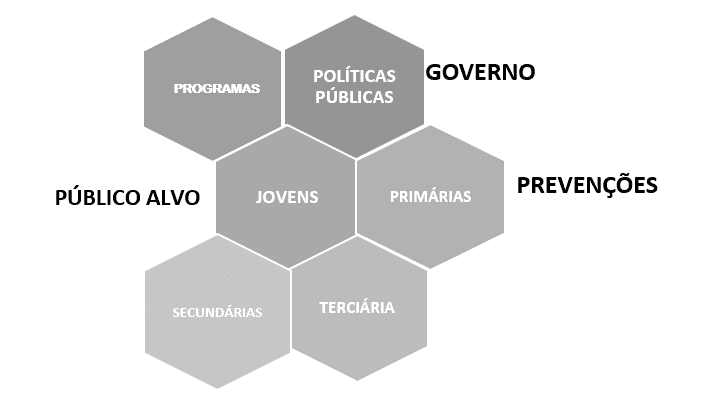
METHOD USED
For this, some data were collected from the agencies that serve young people in conflict with the law, with a quantitative survey with data collection from the period from 2014 to 2018 in the capital of Amapá, through the information provided by the statistical and criminal analysis center of the Integrated Center for Operations and Social Defense (CIODES), where they record all occurrences attended by the Military Police , via the emergency telephone “190”.
On the other hand, we request from the statistical and Planning center of the General Civil Police Station, the amount of procedures performed by the Police Investigation of Infractional Acts (DEIAI), which performs the procedures of Circumstantial Police Report (BOC), Self-Seizure in Flagrante (AAF), Auto de Investigação Social (AIS).
Thus also to the Court of Justice of the State of Amapá (TJAP), who apply the socio-educational measures, through the Child and Adolescent Court, was researched on the official page of the Government of the State of Amapá, the link of the Secretary of Planning of the State of Amapá (SEPLAN) the Public Budget for the Foundation of Children and Adolescents (FCRIA) in the period researched.
The existing military police force of Amapá was also researched, through the General Bulletin of the Institution, to understand that “delinquency should be studied as a dialectical and not absolute phenomenon” (VERRISÍMO, 1990, p.203). Therefore, a survey of all the agencies involved in the process was carried out, ranging from the first calls by the military police to the measures applied and their follow-ups, and ending with a proposal for a government program called Baluarte.
RESULT AND DISCUSSION
The information of CIODES, were requested those that involved young people in conflict with law, that is, the infractions, in this situation the police actions, both of the military police and the civil police, performing their procedures in the DEIAI, Investigation of Infractional Acts, Circumstantial Police Report, Self of Apprehension in Flagrante, Auto de Investigação Social are inserted in secondary prevention.
Graph -1 Chart involving Infractions – CIODES/DEIAI (2014-2018)
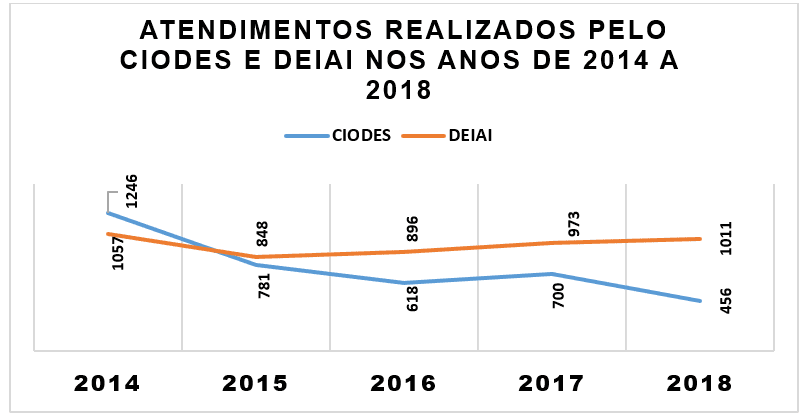
In the survey between 2014 and 2018, in the first year of the survey, 1,246 (one thousand two hundred and forty-six) calls for infractions by the military police were conducted, while in the specialized police station there were 1057 (one thousand and fifty-seven) in 2015 were 848 (eight hundred and forty-eight) procedures by the DEIAI, and by the military police were 781 (seven hundred and eighty one) in 2016 were 896 (eight hundred and ninety-six) procedures in the DEIAI, by the military police there were 618 (six hundred and eighteen) in 2017 were 973 (nine hundred and seventy three) procedures by the police station and 700 (seven hundred) calls by the military police, in 2018 were 1,011 (thousand and eleven) procedures in the DEIAI, and only 456 (four hundred and forty-six) calls by the military police.
What is perceived that although the numbers of infractional acts there was a decrease, on the other hand, the procedures performed by the DEIAI increased, therefore, it cannot be affirmed that there was a decrease in the infractions, since the numbers of procedures of Investigation of Infractional Acts, Police Report of Circumstantial Occurrence, Self of Apprehension in Flagrante, Auto de Investigação Social , are much larger, according to graph 01.
In the case of information from the Court of Justice of the State of Amapá (TJAP) only the capital of Amapá was attributed, also related to the absolute numbers of the socio-educational measures of the same section from 2014 to 2018. The applications of measures by the judiciary, occurs since the middle of the nineteenth century by the Imperial Criminal Code of 1930[9], “minors 14 years who committed an infraction could be hospitalized with a period stipulated by the Judge”. Today, the measures applied have become more humanized.
On the other hand, the absence of a single system, which could control all the measures applied and their implementation, through network technology, that could be consulted by the military police during the attendance of infractions. Which provided the following data from table 01
Table 01 – Number of socio-educational measures in the period 2014 to 2018
| Infractions | 2014 | 2015 | 2016 | 2017 | 2018 | Total |
| Warning | 0 | 0 | 1 | 0 | 0 | 01 |
| Hospitalization s/ ativ. Ext. | 138 | 82 | 37 | 16 | 20 | 293 |
| Hospitalization with ATIV. Ext. | 0 | 1 | 1 | 3 | 0 | 05 |
| Assisted freedom | 122 | 64 | 22 | 13 | 18 | 402 |
| Damage repair | 01 | 0 | 0 | 0 | 0 | 01 |
| Provision of service | 231 | 222 | 126 | 70 | 48 | 697 |
| Semi-freedom | 120 | 169 | 65 | 35 | 13 | 402 |
| Total | 473 | 455 | 213 | 118 | 79 | 1.799 |
Source: TJAP (2019)
Although the measures are mostly lenient as the provision of service in the five-year period were assisted freedom, semi-freedom, hospitalizations without external activities are due to compliance with the principles of brevity, exceptionality and respect for the peculiar condition of a developing person, because these characteristics cause most of the measures imposed are directed to the municipality that is not in the scope of the research.
The fragility observed that the measures were broken, between the State and Municipal Executive Powers, of the first are semi-freedom and hospitalizations, the second measures of service provision and assisted freedom, according to Art. 5 of The Law no. 12.594/2012.
The reading of the data presented, in the case of crime, changes only the terminology is not a mere euphemism, when referring to the infractions since it is not a crime, and the socio-educational measures are not a pity, because it is a special rule that seeks to comply with the principles of brevity, exceptionality and respect for the peculiar condition of a developing person. In view of these factors, the quantification of the measures applied by the Judiciary presented few significant numbers, as shown in table 01.
Thus, to praise the extracriminal nature of the matter, the application of socio-educational measures is not subject to the parameters of the Penal Code and penalist doctrine for the dosimetry of the penalty, therefore preserving the right of the child and adolescent, because they are subject to the application of the provisions contained in Law 8,069/05.
In relation to the State, the public budget survey showed marked budget variation in the respective years that make the development of programs unfeasible, compromises resocialization actions, because the budget gap does not meet young people with a quality education, qualification for the labor market, due to government failures makes “adolescents build a social reality that they are inserted ,”influencing cognitive and behavioral development that young people are being recruited by organized crime (COELHO; ROSA, 2013, p.163). As graph 02.
Graph 02 – FCRIA Public Budget
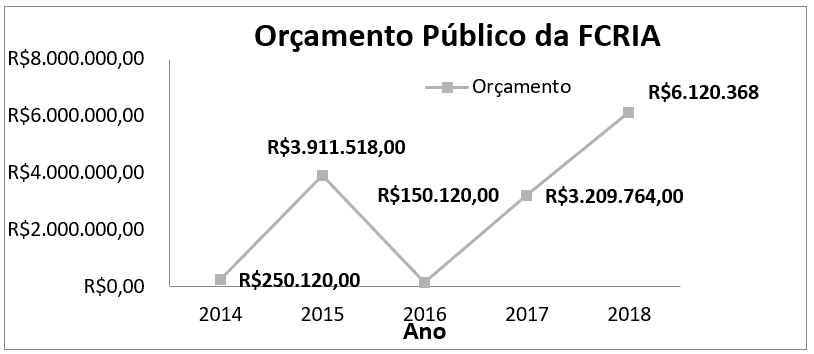
These socio-educational measures, are sanctions in a coercive way due to the need that goes from a simple warning to an hospitalization that can not exceed 03 (three) years, these measures are provided for in Article 112 of the Statute of the Child and Adolescent (ECA) always aiming at protective measures, through state intervention is where the public budget enters to be able to accompany these young people , therefore, as observed in the values presented by SEPLAN had variations considered for the Child and Adolescent Foundation (FCRIA), according to graph 02.
Thus, the institution created through Law No. 1,291 of January 5, 2009 as the purpose of implementing the follow-up policies of young people who have committed infractions, without financial resources is impaired in guaranteeing the rights of these young people, as article 2 below:
Art. 2º The Foundation of Children and Adolescents of the State of Amapá (FCRIA), aims to coordinate and implement the policy of Promotion, Guarantee and Defense of the Rights of Children and Adolescents in situations of personal and social risk, and adolescents who are perpetrators of an infraction in compliance with Precautionary and Socio-Educational Measures.
On the other hand, culture, social reality, trivialization of violence, the fragility of legislation as observed interfere in the measures applied to these young people. This predisposition to a developing being that requires more adequate attention by the family, school and State, otherwise the tendency is to go into the world of crime, recruited by organizations that know they need to strengthen their powers, increasing the number of members, it is known that “adolescence being a social construction and historically determined by culture and language, which are mediators of social relations” that lead these young people to the path of crime (PADOVANI et al , 2016, p.610).
THE BALUARTE PROGRAM PROPOSAL
The proposal is based on the Guidelines and Strategic Objectives, such as the principles of Universalization, Protection, Effectiveness, based on the Sustainable Development Goals (ODS) of the PPA- 2020-2023, with an Integrated management for social development and social defense for the reduction of homicides.
Following the guidelines of Law No. 13,675 of June 11, 2018, which regulates the bodies responsible for Public Security, created the National Policy of Public Security and Social Defense (PNSPDS) and the Unified Public Security System (SUSP) in line with the National System of Socio-Educational Care (SINASE), through resolution No. 160 of November 18, 2013 , which we present the program called “Baluarte”
The proposal, based on the situational strategic planning of Carlos Matus[10], following the principles of public administration planning, developed according to the planning methods for partially structured and complex problems –Crime.
Because the social and economic environments previously are relatively stable, today, the scenarios are prospective, requiring a more flexible methodology to deal with a complex, dynamic reality and appropriate to the management of public policies based on the Amapá 2030 Guideline that provide for result management and monitoring by indicators. Taking advantage of the restructuring of the Children and Adolescent Foundation (FCRIA) and with a favorable scenario for the implementation of the Baluarte project of the Military Police of Amapá, complying with government guidelines.
With this, involving several public entities to meet the needs of these young people, opportunistic studies, through youth and adult education (EJA), insertion in the labor market, with professional qualification, sport and citizenship and counting on the involvement of the family and organized civil society. Thus, providing solutions in primary and tertiary prevention with integrated participation with formulation of performance indicators, creation of an Integrated Management Council of municipal and state executive powers are foreseen in the proposal.
The proposal aims to reduce homicide data by 15% according to the PPA-Federal target, being attainable within the reality of the State of Amapá aligned with the state PPA, according to some challenges such as integrated management of social defense (0036), humanized care for children and adolescents who provide 20% to be included in resocialization projects by 2023 (0014), Amapá Educando (0016).
The Baluarte project contributes significantly to several goals of the Government of the State of Amapá, in the Education of Youth and Adults- EJA, which establishes (45.4%) young people, elementary school (13.7%) and mainly the insertion of young people in technical vocational courses to insert the labor market (80%). That is, the main sectors of social development in a networking system in favor of young tucujus who are in conflict with the Law.
The project period on average of 03 (three) years for being a pilot of Public Policies in the social area, after its implementation, if it presents favorable data may extend to other municipalities such as Santana, Jari and other municipalities, fulfilling the principle of continuity and efficiency of public administration, through the evaluation indicators themselves, so that it can be transformed into a state program , bringing a benefit to the whole of Amapaense society.
STRUCTURING OF THE INTEGRATED MANAGEMENT OF THE BALUARTE PROGRAM
1. Sponsor
Government of the State of Amapá.
2. Project Manager and authority level
2.1 Integrated Management Board – CGI, with the following composition:
I – From the Executive Government:
(a) SIMS representatives;
b) Representative of FCRIA
c) Representatives of the Board of Social Action and Citizenship of PMAP
d) Representative of the Secretary of Sport and Leisure- SEDEL
II- – From Government Institutions:
a) Representative of the State Public Prosecutor’s Office
b) Representative of the TJAP
c) DEFENAP representative
d) Representative of the Regional Labor Superintendence – SRT
III – Civil Society:
(a) a representative of the INOVA Institute;
(b) a representative of SENAI;
c) A member of the CEDCA/CMDCA
PROGRAM STAKEHOLDERS
|
PMAP |
General Commander | It will coordinate through the Social Action and Citizenship Directorate with the other institutions to align the implementation of actions, through an Integrated Management Council. |
| SEED | Maria Goreth da Silva | Assignment of physical space, such as living room, sports court, kitchen, cafeteria and auditorium of CEPAJOB. In addition, from the staff 01 art teacher with a degree in music, 01 literacy teacher, teacher Rozilda Pereira Ferreira, co-author of the project, Formal Education – Elementary II, EJA modality and Professional qualification courses. |
| SIMS/
FCRIA |
Alba Nize Colares
Chief Executive Officer
Dr. Andreza Melo de Lima |
Food, snack.
Transport for sports activities
Workshops; other services offered and Professionals: Psychologists, Social Worker, Social Educator. |
| FAJIJ | Judge Gilberto Pinheiro | Support Fund for the Child and Youth Court to maintain the project |
|
VEPMA |
Head Judge Rogério Funfas | Resources from alternative penalties to be invested to maintain the project for three years |
|
SENAI |
Director of Operations | Professional Qualification – FICs courses (to be defined) |
| UNIFAP | Dean of
Community outreach and support |
Professionals: Teachers and academics |
|
TJAP |
Sueli Pini | Responsible for referring students to the project and meetings for guidelines for implementation, as provided for in Article 5 of Resolution No. 165 of November 16, 2012. Through the Court of Childhood and Youth with duly completed requests. |
| MP |
Judith G. Telles | Professionals for lectures / professional guidance, socio-educational, parents and guardians; 01 psychologist and 01 social worker to perform consultations each, being individual assistance to socio-educational students, visits to the family of socio-educational students; Monitoring the execution of activities / actions |
|
SEDEL |
José Rudney C. Nunes | Support with sports activities and scholarships for students along with other physical education academics from UNIFAP |
|
INSTITUTO INOVA
|
Fabíola Ribeiro | Professional qualification courses, Insertion in the Labor Market (according to available positions) |
|
SRT
|
Superintendent
Regional Labor |
Professional Qualification – FICs Courses (to be defined) Insertion in the Labor Market (according to available positions) |
|
CEDCA/CMDCA |
Presidents | Authorization for implementation and inspection and support |
|
INSTITUTO INOVA
|
Fabíola Ribeiro | Professional qualification courses, Insertion in the Labor Market (according to available positions) |
|
SRT
|
Superintendent
Regional Labor |
Professional Qualification – FICs Courses (to be defined) Insertion in the Labor Market (according to available positions) |
|
CEDCA/CMDCA |
Presidents | Authorization for implementation and inspection and support |
Source: author.
FINAL CONSIDERATIONS
Although military police work is indispensable to prevent crime, with ostentatious policing, are only secondary actions, to improve this prevention, it is essential, that the state government, make contests to fill the deficit of military police, otherwise, if you maintain the same amount of police, the philosophy of community policing or community approximation become unfeasible , not counting the insufficient budget for revitalization and reform of the physical facilities once used.
The most important prevention is the primary to reduce crime rates among young men when it comes to employment, when this rate increases inversely almost triples the homicide rate, according to Cerqueira and Moura. These factors should be concerned, because with 66,000 unemployed in Amapá, according to IBGE, is one of the factors that generate crime in the state.
Therefore, public policies are needed to promote the generation of employment and income among young people, revitalization of state schools to implement civic-military modalities. On the other hand, tertiary prevention, consists of the prison system, which is in crisis, with excess of prisoners, that does not resocialize anyone, young inmates, too, are not properly assisted, both are joining the factions, not to mention the legislative power, passed the law of the custody hearing, which turns the prisons into egregious in preventive or loose with anklet to serve time at home , that is, unless conduct for further crimes.
Being more sensible to invest in primary prevention, as education that the positive impact is much better, the increase in crime in the state of Amapá is not exclusive to the police, but rather the opportunities of quality schools, especially full-time to follow these young people closely, according to art. 227 of the Federal Constitution of 1988 that says “duty of the family, society and State to ensure children and adolescents their rights, saving from all forms of neglect, violence” through public policy in accordance with Law No. 13,675 of 2018 that encourages the development of programs to integrate security with social ones, with such preventive action measures in criminal policies , may mitigate crime data in the state of Amapá.
REFERENCES
BENAVENTE. R., Delinquência juvenil: Da disfunção social à psicopatologia. Análise Psicológica, 2002. Boletim de Análise Político-Internacional, nº 11, UnB, p.69-72, ano 2017. Disponível em: http://repositorio.ipea.gov.br/bitstream/11058/8077/1/BAPI_n11_Senasp.pdf< Acesso em 25 de Julho de 2019>
BRASIL. Estatuto da Criança e do Adolescente. Lei Federal 8.069, de 13 de julho de 1990. Brasília: Secretaria de Estado dos Direitos Humanos, Departamento da Criança e do Adolescente, 2002. CÂMARA DOS DEPUTADOS, Lei nº 13.675 de 11 de junho de 2018, disponível em: http://www.planalto.gov.br/ccivil_03/_ato2015-2018/2018/lei/L13675.htm< Acesso em 20 de fevereiro de 2020>
CERQUEIRA, D. et al., Atlas da Violência, IPEA, Rio de Janeiro, 2018.
CERQUEIRA, D.R.C., MOURA, R.L. Efeito das oportunidades no mercado de Trabalho sobre as taxas de homicídios no Brasil. Área 12 – Economia Social e Demografia Econômica, Rio de Janeiro, 2014.
COELHO, B. I., ROSA, E. M. Ato infracional e medida socioeducativa: representações de adolescentes em L. A. Psicologia & Sociedade, Universidade Federal do Espírito Santo, Vitória, 2013.
COSTA. A. T. M. A SENASP E AS POLÍTICAS ESTADUAIS DE SEGURANÇA. Criança e do Adolescente. LEVANTAMENTO ANUAL SINASE 2014. Brasília: Secretaria Nacional dos Direitos da Criança e do Adolescente do Ministério dos Direitos Humanos, p.1-65, 2017.
CHAGAS, C.A.N. et al. Geografia da Violência: Produção do espaço, território e Segurança Pública, p.392, 1º ed., Belém, GAPTA/UFPA, 2018.
DATASUS, Disponível em: http://tabnet.datasus.gov.br/cgi/idb2012/a1801b.htmhttp://tabnet.DATASU S.gov.br/cgi/idb20 12/a1801b.htm>. Acesso em: 02 mar. 2018>.
DEIAI, Delegacia Especializada em Investigação de Atos Infracionais- (2014), Informações de autos de apreensões em flagrante e autos de investigação social e boletins de ocorrência circunstanciados em 2014. Macapá, 2015.
FERNANDES. N.; FERNANDES, V. Criminologia integrada. 2º ed. rev. Atual e ampla. São Paulo, Revista do Tribunais, p.117, 2002.
FCRIA, Relatório do quadro situacional dos núcleos de meio fechado e semiliberdade que compõem a Fundação da Criança e do Adolescente do Amapá- Ano 2014. Macapá, 2015.
FERREIRA, Helder Rogério Sant’Anan et al, IPEA. Instituto de Pesquisa Econômica Aplicada. Violência e Segurança Pública em 2023: cenários exploratórios e planejamento prospectivo, Brasília, 2015.
GEA, Secretária do Planejamento do Estado do Amapá. Disponível em: https://seplan.portal.ap.gov.br/<acesso em 22 de Julho de 2019
JORGE-BIROL, Alline Pedra. Políticas públicas de prevenção da violência e a prevenção vitimária. Âmbito Jurídico, Rio Grande, n. 42, jun. 2007, Disponível em: http://www.ambito- juridico.com.br/site/index.php? n_link=revista_artigos_leitura&artigo_id=1802> acesso em 25 de abril de 2019<
LAZZARINI, A., A SEGURANÇA PÚBLICA E O APERFEIÇOAMENTO DA POLICIA NO BRASIL. Criminalidade e violência. Rio de Janeiro, v. I, abr./jun. 1991.
LEI DE 16 DE DEZEMBRO DE 1830. Código Imperial. Disponível em: http://www.planalto.gov.br/ccivil_03/leis/lim/lim16-12-1830.htm᷾ <acesso em 08 de Abril de 2019>
LIDA, I., Planejamento Estratégico Situacional, Assessor de Planejamento do CNPq, Brasília, DF, 2009.
OLIVEIRA, C. A. de, Criminalidade e o tamanho das Cidades Brasileiras: Um enfoque da Economia do Crime, RESEARCHGATE, Passo Fundo, Universidade Federal do Rio Grande, 2005.
PADOVANI, S. et al. Significados Construídos acerca das Instituições Socioeducativas: Entre o Imaginado e o Vivido, Universidade Francisco, Bragança Paulista, vol. 21, Brasil, dez 2016.
PEREIRA, E. da S., Introdução as Ciências Policiais: A polícia entre a Ciência e a Política, ed. Almedina, São Paulo, 2015.
PICANÇO. E. Relatório da Fundação da Criança e do Adolescente. FCRIA, Governo do Estado do Amapá, p.1/9, 2014.
POLICIA NO BRASIL. Criminalidade e violência. Rio de Janeiro, v. I, p.25-85, abr./jun. 1991. Representações de adolescentes em L. A. Psicologia & Sociedade, Universidade Federal do Espírito Santo, Vitória, p.163-173, 2013.
QUEIROZ, R.B. Formação e Gestão de políticas Públicas. 3º ed., Curitiba, Ibpex, 2011.
Secretaria de Direitos Humanos da Presidência da República. Sistema Nacional de Atendimento Socioeducativo – Lei Nº 12.594/12. Brasília, 2012.
TJAP, Vara da Infância e Juventude – Informações do quantitativo de Processos referente a atos infracionais, Macapá, 2019.
VERÍSSIMO, M.M. A Psicologia Comunitária e o Sistema Judicial: Uma nova forma de olhar e intervir sobre a Delinquência, p.203-209, ISPA, analise pdicologica,1990.
ZAPPE, J.G., DIAS, A.C.G. Delinquência Juvenil na Produção Científica Nacional: Distâncias entre achados científicos e intervenções concretas, Barbarói, Santa Cruz do Sul, p.82-103, n. 33, 2010.
APPENDIX – FOOTNOTE REFERENCES
2. Georgyi Frantsevich Gause formulated the Gause principle, they are exclusive for each species, and for two or more of them to coexist in the same habitat, it is necessary that their niches have different characteristics and sufficient competition established between them is so sudden that the coexistence becomes impossible. Available at: https://www.infoescola.com/ecologia/principio-de-gause/<access on May 05, 2020>
3. Theory of public choice of government failures, from the 1960s.
4. It is the Police as a subject of knowledge- to assert itself in the daily attitude produced within the human being’s experiential sphere, better, in the activity that is consummated in the legal relationships produced from moments (legal-administrative and criminal legal) of communicative intersubjectivity human. (PEREIRA, 2015, p.43)
5. IBGE. Available at: https://g1.globo.com/ap/amapa/noticia/2019/11/19/amapa-mantem-2a-maior-taxa-de-desemprego-do-pais-e-66-mil-seguem-sem-trabalho.ghtml<accessed on 17 February 2020>
6. IBGE available at: https://cidades.ibge.gov.br/brasil/ap/panorama<access on February 18, 20202>
7. They are people or groups, who legitimize the actions of an organization and who have a direct or indirect role in the management and results of that same organization, which can be positively or negatively affected, depending on its policies and way of acting. Available: https://www.significados.com.br/stakeholder/<access on July 12, 2019.
8. Violence monitor- G1.Available: https://g1.globo.com/monitor-da- violencia/noticia/2019/02/27/numero-de-mortes-violentas-cai-mais-de-10-no-brasil- em2018.ghtml <accessed on 28 April 2019>
9. LAW OF DECEMBER 16, 1830. Available: http://www.planalto.gov.br/ccivil_03/leis/lim/lim16-12-1830.htm᷾ <accessed April 8, 2019>
10. Developed by the Chilean economist Carlos Matus, from the 70’s, as a more flexible method, allowing to work with the complexity of social problems. (LIDA, 2009 p.114).
[1] PhD in Police Sciences of Security and Public Order/ Barro Branco / PMESP.Specialist in Public Security Management and Legal Knowledge in Public Security, Postgraduate in Teaching in Higher Education / IESAP, specialist in Public Management from the State University of Amapá, Graduated in the Military Police Academy of Pau-d’alho / PE.
Sent: May, 2020.
Approved: October, 2020.
